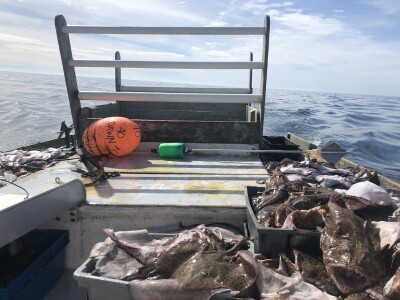Poll position
As I have noted before, "There are three kinds of lies," according to the 19th century British Prime Minister Benjamin Disraeli: "lies, damned lies, and statistics."
If Disraeli had hung around another 100 years he might have added a fourth kind: polls.
Polls are more insidious than statistics by an order of magnitude. Statisticians take true data and try to arrange them in context. Pollsters arrange data by the way in which they pose questions, so there may be no fundamental truth at all.
If you don't like what the statistics tell you, you can re-examine the data. If you don't like what the poll tells you, you have nowhere to turn. The fix is in.
If you're a pollster, of course, that's not your problem. Hence, the so-called push poll, yet another order of magnitude removed from truth. The push-pollster has no interest in what is: his objective is to "push" respondents toward an inevitable conclusion.
Typically, a push poll uses a single question to shape public opinion; it's quick, and a phone bank can make a lot of hay in a relatively short while: "Would you vote for Joe Doak if you knew he had been accused of child molesting?"
Nonetheless, a seemingly innocuous poll can contain numerous questions and still lead respondents down the primrose path.
For instance, the Pew Environment Group recently conducted a survey designed to further the cause of catch shares for New England groundfish fishermen.
The group has been unequivocal in its support for catch shares. So have others, though it would be a mistake to say that support for catch shares is universal among New England fishermen.
The poll introduces respondents to the idea of "environmental concerns" and then lists seven adverse circumstances: pollution, global warming, toxic waste, among others, and of course, overfishing.
Respondents are then asked if they are "aware that overfishing has become a problem in New England."
Several questions later, the cure is introduced: "A new [the poll's italics] management system has been proposed that sets specific annual catch limits for each threatened species of fish. These limits are based on what the best available science says is necessary to restore fish populations."
This is followed by a series of questions that highlight the plan's selling points: community-based fisheries, catch monitoring, bycatch reduction... even better weather are features of the proposed regime.
And of course, a dig at the fishing industry: "Which of the following do you think poses the greatest threat to the future of fish stocks and the fishing industry in New England:
1) government regulations;
2) lack of accurate science about the status of fish populations;
3) unwillingness of commercial fishermen to respect reasonable limits."
Not surprisingly, the poll's results lend it to being used as support for catch shares. After all, no reasonable person would be expected to condone an alternative that permits overfishing, promotes bycatch, fails to monitor landings, destroys communities and requires fishermen to fish in bad weather.
Nevertheless, the poll mentions neither catch shares nor the allocation of fish, even though they are the crux of the plan and may eventually (some would say "will probably") derail it.
We can only conclude that the poll is part of a full-court press toward catch shares. After all, we know the director of NOAA, Jane Lubchenco, is wedded to catch shares, and has gone so far as to line up millions of dollars in private money (from the National Fish and Wildlife Foundation) to help facilitate their implementation.
If the government and the environmental community are four-square behind catch shares, what better strategy than to engage the public and enlist its support? Hence the question about threats to fish stocks and unreasonable commercial fishermen, which otherwise seems a non sequitur.
Speaking of polls, statistics and such, the journal Marine Policy in May published survey results asserting that "37 percent of fishers, 61 percent of fishery managers and 80 percent of fishery enforcement staff believe that 'the combined adverse impact of all violations on the health and manageability of fish resources' is significant, highly significant, or extremely significant" in the Northeast groundfish fishery.
The study estimates that as much as 24 percent of the harvest is taken illegally and that there is an economic incentive toward noncompliance.
The question is, are these beliefs based on observation, in which event we are left to wonder who would be free on bail to go fishing, or on the assumptions of responders, in which case the study's premise founders?
* * *
Last month was Nils Stolpe's last column for National Fisherman, and I for one will miss being among the first to read his work. The good news is that Nils will continue to share his perspective, and you can find it at www.fishnet-usa.com.
– Jerry Fraser






